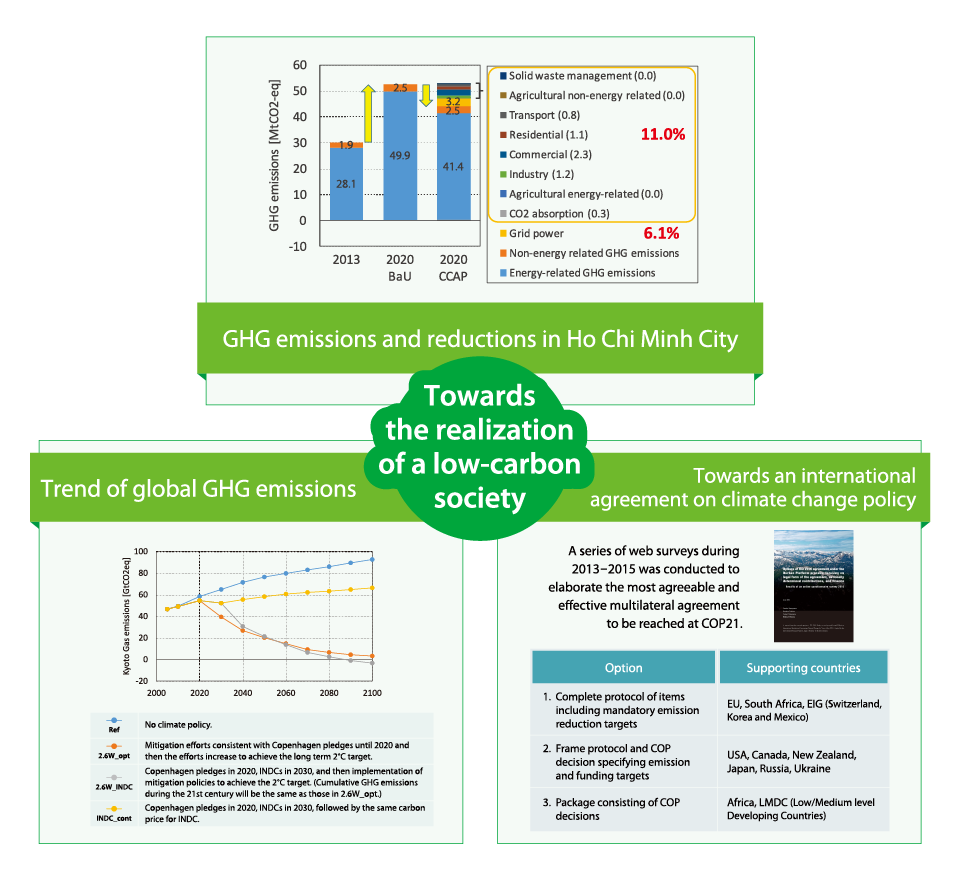Project 3Comprehensive climate policy assessment and development of visions and scenarios towards a low-carbon society
Results of FY 2015
In sub-theme 1 we analyze numerical information, specifically the socio-economic trends and technologies for countermeasures which are necessary for achieving a low-carbon society (LSC) as well as the concrete actions reflecting these factors, applying the back casting methodology for Asian countries such as Indonesia, Malaysia and Vietnam. This information is used as basic scientific data for supporting international negotiations about climate change countermeasures. We also provide support to Asian countries and cities to develop low-carbon societies. For example, in cooperation with local researchers and policy makers in Ho Chi Minh City in Vietnam, we perform numerical analyses of GHG emission reductions achieved after the implementation of the Climate Change Countermeasures Implementation Plan.
Through the improvement of the models that we had developed, we estimate in sub-theme 2 the costs of countermeasures for GHG emission reduction reflecting regional and sectoral characteristics, and examine GHG emission reduction plans. Using global models, we also develop various scenarios as part of an international project, considering not only mitigation policies but also global warming impacts and adaptation policies. Furthermore, based on the results of the other sub-themes we perform integrated analyses using Japan-specific and global models, and assess the change in global GHG emissions as a result of the reduction targets known as Intended Nationally Determined Contributions (INDC), which were submitted by Japan and other countries before COP21.
Concerning the results of sub-theme 3, we presented those factors that had been found to hinder the coming international negotiations, and suggested a structure for an international system that should be aimed at in the mid- and long run. Since the Paris Agreement, which was adopted at COP21 at the end of 2015, appears to be analogous with one of the agreement document drafts that we had developed in our research, we can say that we were able to present a realistic plan. In our future research we continue to address the remaining issues of the Paris Agreement.




